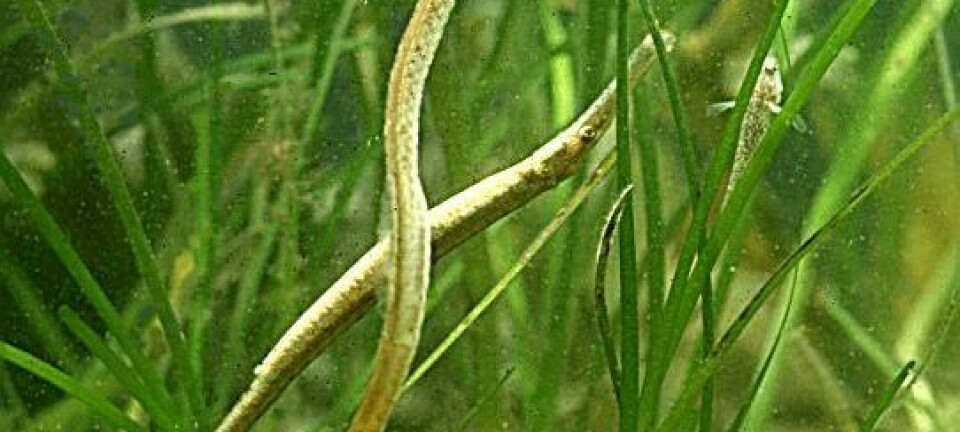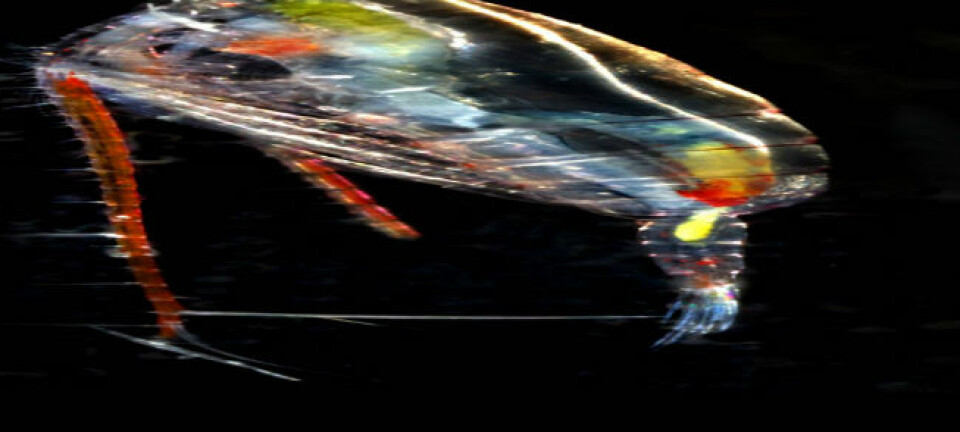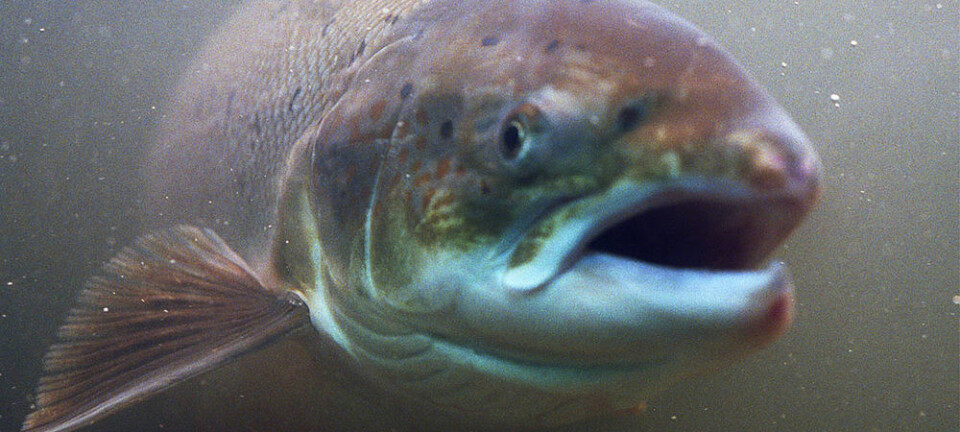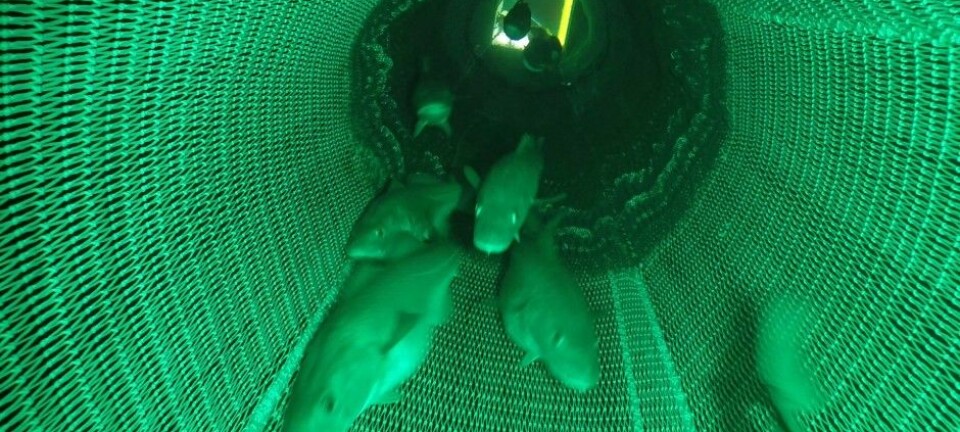
Goby behaviour says much about sexual selection
One fish off the coast of central Norway has set a record for the number of female mates it had. And that’s not all.
Denne artikkelen er over ti år gammel og kan inneholde utdatert informasjon.
It was the end of a long day snorkeling in the kelp beds off an island in central Norway, and researchers Trond Amundsen, Sebastian Wacker and their colleagues from the Norwegian University of Science and Technology (NTNU) thought they would finish up. Amundsen, a biology professor at the university, stuck his head into the water one last time.
It was then he found two male gobies fighting, locking dorsal fins and biting each other in a display of power and status. He realized from their behaviour that one of the fish was protecting a nest with a batch of eggs.
Sure enough, Amundsen found the nest in a crease of kelp not far from where the goby males were fighting. No surprise there.
But what was shocking was the sheer number of eggs inside the nest. Amundsen estimated it contained 13,000 fertilized goby eggs, or more than twice the maximum number of goby eggs that had ever been reported in the scientific literature.
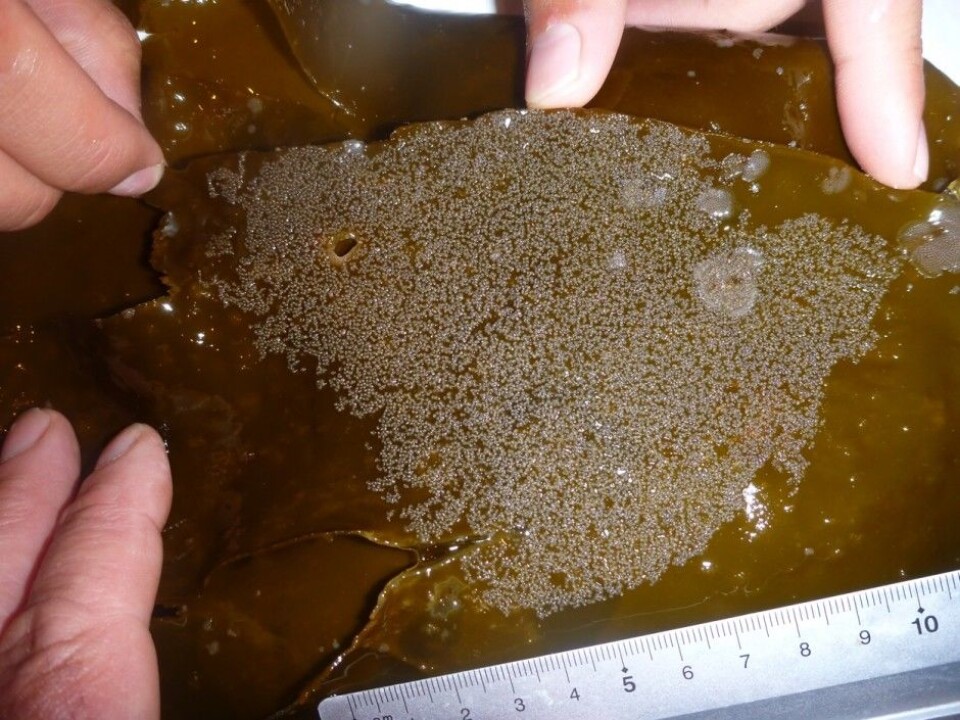
“We know that each female lays between 500 and 800 eggs. This male must have therefore have managed to attract and mate with between 15 and 25 females, who laid eggs in his nest,” Amundsen said.
A window on sexual selection
Gobies are plentiful along the Norwegian coast, and because they live in kelp forests near the shoreline, they are easy for biologists to study.
But their intriguing sexual behaviour also sheds light on how different types of sexual selection affect reproduction, and ultimately, evolution of the species itself.
For example, it is common for a male goby to have a number of female partners and for the females to lay their eggs collectively in a nest that the male then guards. But for one goby to have so many partners while other gobies have none suggests that some aspect of sexual selection was much stronger than researchers previously understood.

“But we shouldn’t overstate the importance of this huge nest of eggs,” Amundsen said. “We need a lot more data before we can say anything with certainty about its significance, especially in terms of evolution.”
Big, colourful and powerful wins – but not always
In the animal kingdom, it is often the most colourful, biggest and strongest males that get to mate with females and determine what the next generation of animals will be like.
But that’s not always the case with the two-spotted goby, as Amundsen and his colleagues have discovered and documented over the years in international scientific journals.
For example, at the beginning of the mating season, male gobies fight intensively to partner with female fish.
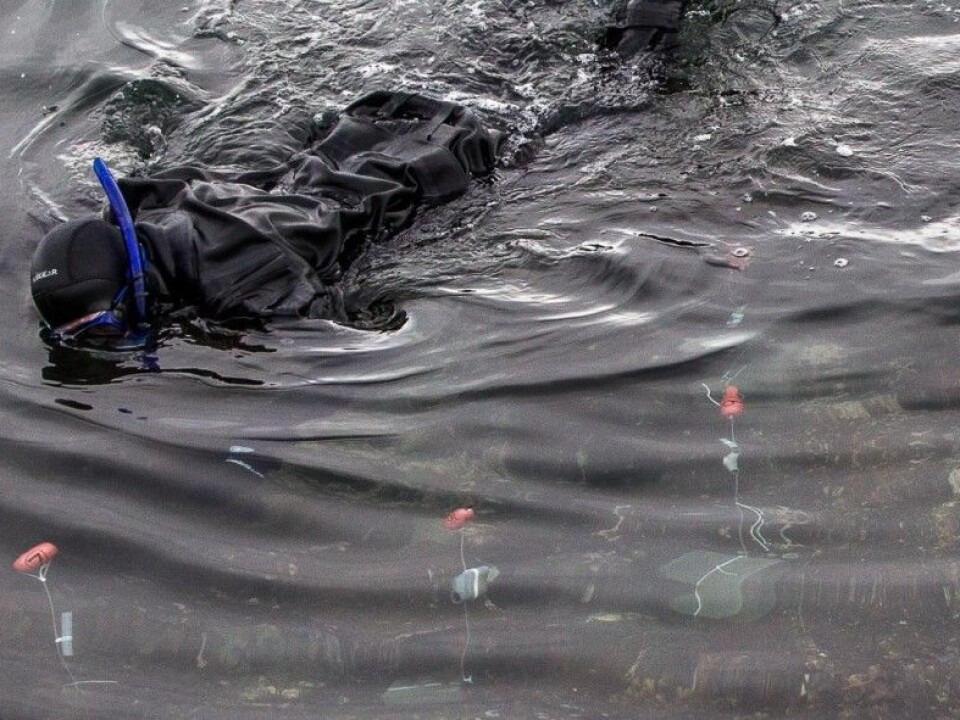
But as the summer continues, it is the females who take over an increasing amount of the hunt for a partner, until by the end of the summer, only females are out on the singles market. By this time, most males are exhausted from all of their mating activities and from having to watch over the eggs in their nests.
“In late summer, we often see five or more females, all of which are trying to attract the attentions of the same totally disinterested male,” Amundsen says.
That’s when the less flashy, smaller male gobies get their chance.
Conventional wisdom and female roles
The conventional wisdom among biologists is that in the animal kingdom, the male’s appearance is all-important, while most females are drab and do little to show off or display their finery.

Humans are the big and strange exception to this rule, where women dress up for men. But more and more, biologists are realizing this rule has some notable exceptions, Amundsen says.
A number of different animal species have females that “dress up” and compete for the attention of males. In fact, now that they know to look for this behaviour, researchers are finding more and more examples of females competing for male attention in the animal kingdom.
The two-spotted goby is particularly interesting from this perspective, because the females and the males actually take on both of these different roles.
“There is a total change in what we call the selection regime over the course of the mating season for the two-spotted goby. Early in the season, there is a strong selection on males, while there is strong selection on females late in the season,” Amundsen said.
-------------------------------------
Read the Norwegian version of this article at forskning.no
Scientific links
- Amundsen, T. & Forsgren, E.: Male mate choice selects for female coloration in a fish. Proceedings of the National Academy of Sciences (2001). doi: 10.1073/pnas.211439298.
- Forsgren, E., Amundsen, T., Borg, Å.A. & Bjelvenmark, J.: Unusually dynamic sex roles in a fish. Nature 429 (2004). doi:10.1038/nature02562
- Wacker, S., Mobley, K., Forsgren, E., Myhre, L.C., de Jong, K. & Amundsen, T.: Operational sex ratio but not density affects sexual selection in a fish. Evolution 67 (2013). DOI: 10.1111/evo.12092







